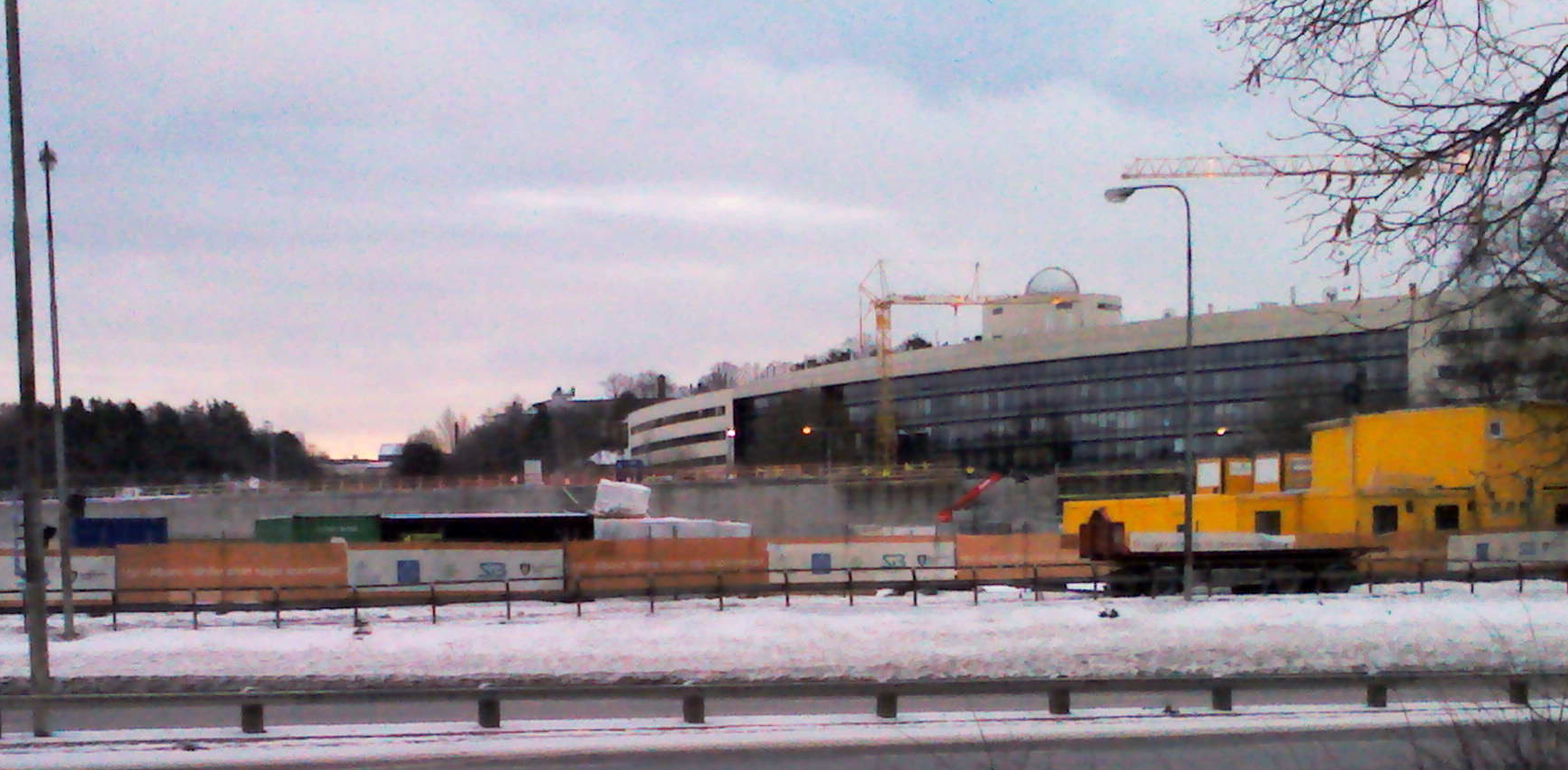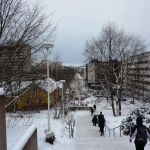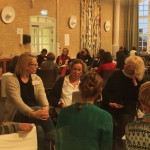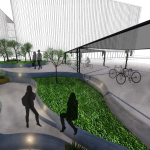Campus Albano is the newest addition to the Stockholm University campus in Sweden. Production commenced in November 2015, after a five-year planning and design process. The student and researcher accommodations, and the university buildings are expected to be ready by 2018 and 2019, respectively.
On January 17, Live Baltic Campus partners Stephan Barthel and Johan Colding attended the Albano Campus Reference Group meeting of which they are members and were updated about the more detailed construction design and architectural shape of buildings and spaces between buildings. Both left this meeting assured that the constructors Akademiska Hus and Svenska Bostäder are trying really hard to realize the ambitious social-ecological design, which will brand mark the campus as the World’s most resilient campus development ever.
On February 24, Barthel and Colding attended a second Albano Campus Reference Group meeting. During this meeting the representatives of Akademiska Hus openly shared information about the figuration of the architectural designs. During the meeting some intense discussions arose around this topic where current solutions were sharply criticized from a number of different points of view. One was raised by representatives of environmental organizations in the area that the large windows will produce ‘light pollution’ into the National Urban Park. Another point was around the color of the buildings. The suggested white color of the buildings was critiqued to make buildings to sort of ‘jump out’ of the surrounding landscape, but not adapt to the natural, nor cultural traditional, colors of this area. Notes were taken and open friendly discussions around those points were performed during the meeting.
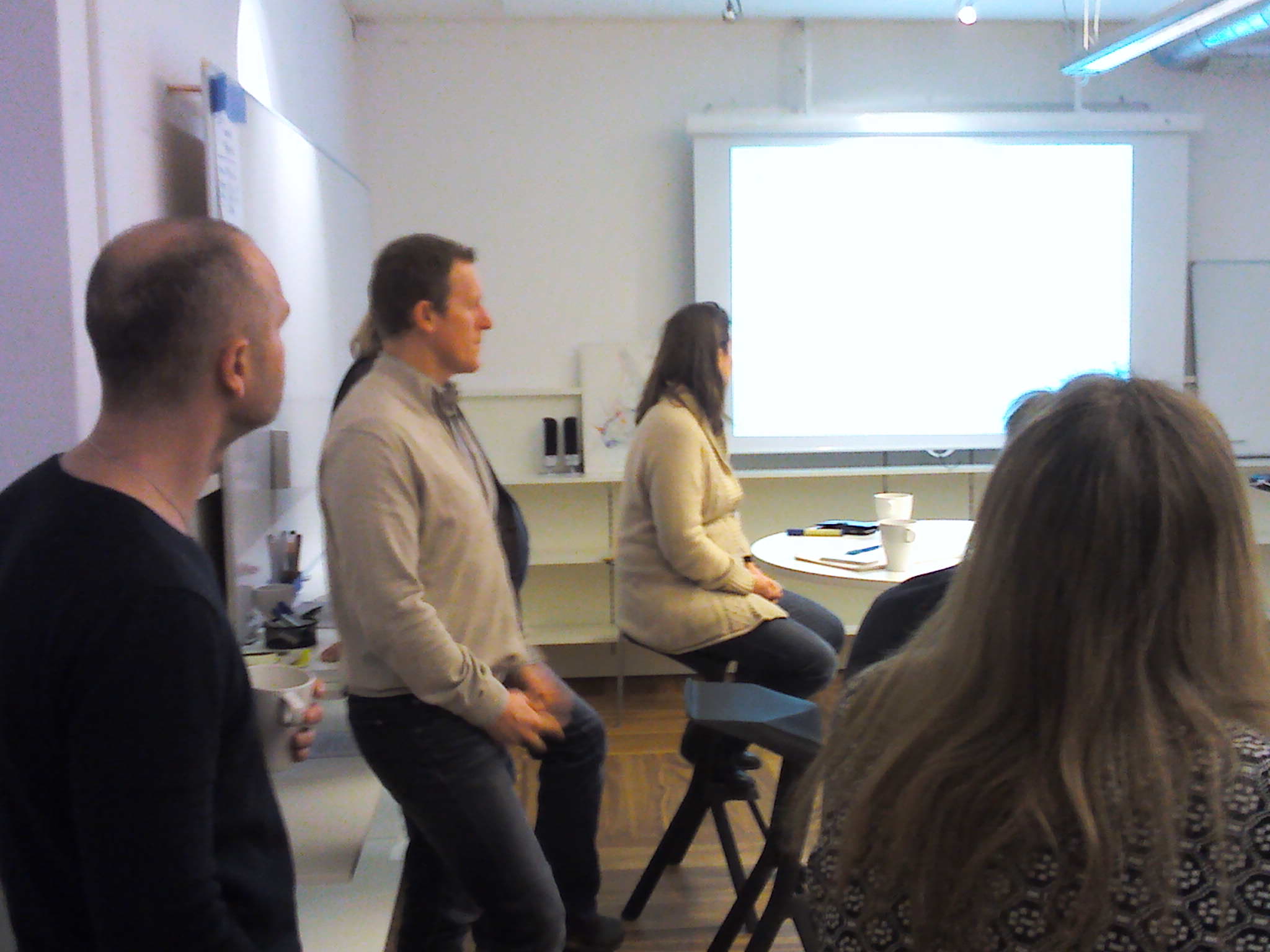
Stephan Barthel and Johan Colding are key memebers in the Albano Campus Reference Group. The group has regular meetings once a month. Photo by Johan Colding.
Also some critique was made about that the architectural figurations of the houses do not follow the design goals set by Akademiska Hus:
1) All buildings shall be perceived to be individual buildings.
2) Designs shall strengthen public space.
3) There must be explicit entrances.
4) Designs shall follow the human scale.
5) Selection of materials shall express current design ideals.
6) Designs shall produce sunny places.
7) Green roofs shall form part of landscape ecological corridors.
8) Internal walk-ways shall be performed in way that it is easy to find your way.
Critique was raised for instance about that the figurations are akin to high modernist ideals of the 1960s and 70s, and are not future oriented and in line with cutting edge university architecture now found for example at Nanyang Technical University in Singapore. Especially design points 1 and 5 are clearly deviating points at current.
The group also agreed that a joint point of work is that of the re-making of the highway called ‘Roslagsvägen’ that currently functions as a social and ecological barrier in the larger campus area of Stockholm University. The group discussed that this is the most important point to enhance how people perceive Albano Campus. We discussed ways to re-make this stretch of highway into something similar to the inner-city boulevard of ‘Valhallavägen’, which is a more walk friendly boulevard planted with street trees. The whole group agreed that such change would enhance all architectural figurations of Albano Campus.
Albano Campus Reference Group
The role of the Albano Campus Reference Group meetings is to monitor the building process so as the final university campus of Albano stays true to the detailed plan and to the social-ecological vision created by the so called Patch Work design group (1) (Barthel et al., 2013). Campus Albano will be unique both for its participatory planning process, and for the strong focus on supporting ecosystem services, for example through conservation of biodiversity in wetlands and on green roofs and through sustainable food production in gardening projects, that involve allotment holders and students. The role of the Albano Campus Reference Group meetings is to monitor the building process so as the final university campus of Albano follows this vision.
By Stephan Barthel and Johan Colding
References:
Barthel, S., Colding, J., Ernstson, H., Erixon, H., Grahn, S., Kärsten, C., Marcus, L., Torsvall, J. (2013). Principles of Social-Ecological Urbanism – Case Study: Albano Campus, Stockholm. TRITA-ARK Forskningspublikationer 2013:3, Stockholm.
(1) Barthel, S., Colding, J., Ernstson, H., Erixon, H., Grahn, S., Kärsten, C., Marcus, L., Torsvall, J.







